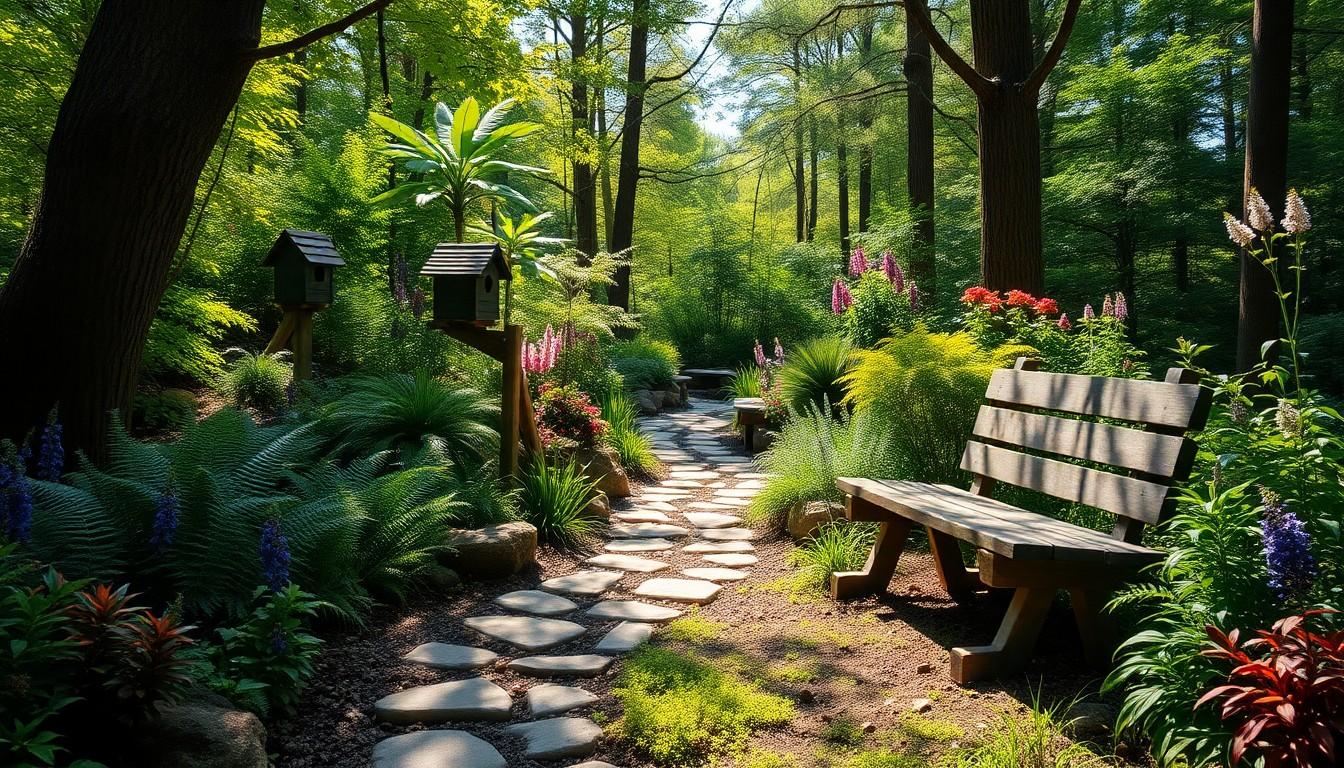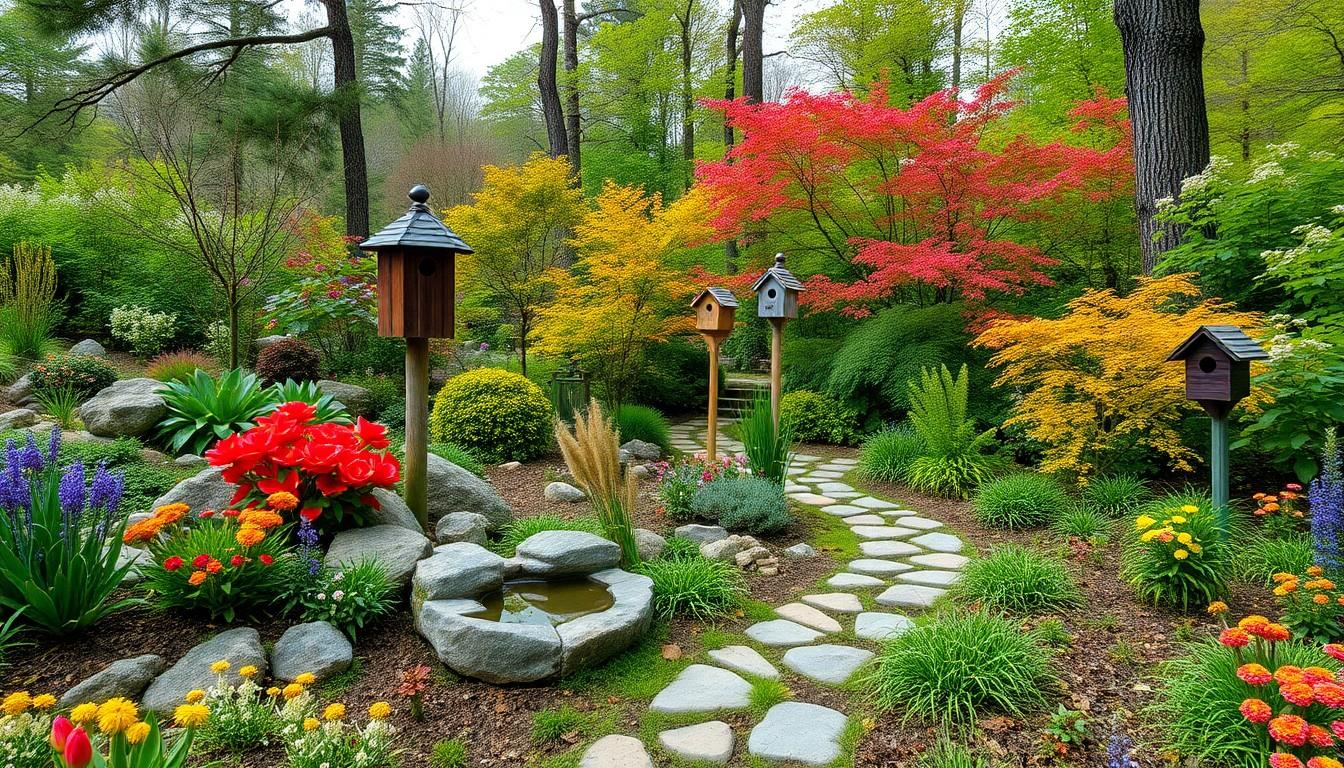The Best Fluffy Pancakes recipe you will fall in love with. Full of tips and tricks to help you make the best pancakes.

Low Maintenance Woodland Garden Design: Create Your Serene Nature Escape
Imagine stepping into a serene woodland garden where nature does most of the heavy lifting. Low maintenance woodland garden design offers a blissful escape from the chaos of everyday life, allowing you to enjoy the beauty of nature without the endless upkeep. It’s like having a personal forest that requires minimal effort—just sit back, relax, and let the plants do their thing.
With the right design, you can create a lush, vibrant space filled with native plants, charming pathways, and perhaps a few whimsical touches. Say goodbye to the days of constant weeding and watering. Instead, welcome a garden that thrives on its own, providing a sanctuary for both you and local wildlife. Whether you’re a gardening novice or a seasoned pro, a low maintenance woodland garden can transform your outdoor space into a peaceful retreat.
Low Maintenance Woodland Garden Design
Low maintenance woodland garden design offers a sustainable approach to landscaping. This style prioritizes native plants, which require less water and care due to their natural adaptation. Creating a woodland garden reduces the need for pesticides and fertilizers, promoting healthier soil and ecosystem health.
Pathways made from natural materials like mulch or gravel enhance accessibility while blending with the environment. These pathways encourage exploration of the garden’s diverse features without disturbing the surrounding flora. Incorporating shade-tolerant species ensures vibrant vegetation in areas with limited sunlight, creating a lush aesthetic.
Layers of plants add depth and visual interest. Ground cover plants such as ferns and wildflowers create a living carpet, preventing weeds and retaining moisture. Additionally, taller trees and shrubs provide structure while offering shelter for wildlife, enhancing biodiversity in garden spaces.
In these gardens, seasonal changes bring unique beauty. Springtime blooms from trillium and woodland phlox provide color before the trees fully leaf out. Autumn foliage from maples and oaks exhibits breathtaking hues, attracting both admiration and wildlife.
Well-chosen features like birdhouses or small water elements support local fauna. Maintaining minimal intervention allows for natural growth cycles, benefiting both plants and animals. Overall, a low maintenance woodland garden promotes relaxation, encourages wildlife visits, and flourishes with minimal upkeep.
Benefits of Woodland Gardens

Woodland gardens offer numerous advantages that cater to both environmental needs and aesthetics.
Environmental Advantages
Creating a woodland garden significantly enhances biodiversity. Native plants naturally attract local wildlife, including pollinators like bees and butterflies. Reducing water usage occurs through the selection of drought-tolerant species. Less reliance on pesticides and fertilizers contributes to healthier soil and ecosystems. Filtering pollutants becomes easier with the right plant combinations, promoting cleaner air and water. Additionally, layered plantings provide habitat for various creatures. This design conserves soil moisture and prevents erosion. Overall, these gardens sustain environmental balance while requiring minimal upkeep.
Aesthetic Appeal
Woodland gardens provide a unique visual experience that changes throughout the seasons. Vibrant blooms in spring create a stunning display, while autumn foliage adds contrasting colors. Varied plant textures contribute depth and interest, enhancing the landscape’s beauty. Pathways made of natural materials guide visitors through lush settings. Incorporating features like birdhouses and small water elements attracts attention and supports aesthetic enjoyment. The tranquil atmosphere fosters relaxation and exploration. These gardens promote an inviting space that appeals to anyone seeking serenity and connection with nature.
Key Elements of Design
Designing a low maintenance woodland garden hinges on thoughtful choices in both plant selection and layout. These elements ensure a thriving, sustainable space that requires minimal effort.
Plant Selection
Selecting native plants plays a crucial role in woodland garden success. Native species typically require less water and care, thriving without the need for pesticides or fertilizers. Choosing shade-tolerant options, like ferns and wildflowers, supports growth in lightly shaded areas. Incorporating drought-tolerant species also enhances sustainability, ensuring resilience against dry spells. Combining plants with varying heights creates visual interest while promoting biodiversity. Examples include intertwining ground covers with taller perennials, encouraging a rich, layered landscape. Finally, including seasonal bloomers fosters year-round appeal, attracting local pollinators and wildlife.
Layout Considerations
Thoughtful layout drives the effectiveness of a woodland garden. Designing with natural curves mimics the surrounding landscape, enhancing the organic feel. Integrating pathways from local stone or mulch allows for easy navigation without disrupting the ecosystem. Arranging plants in clusters creates visual focal points, adding depth and intrigue. Strategic placement of seating areas invites relaxation amidst nature, offering spots for contemplation. Additionally, positioning features like birdhouses and water elements enriches biodiversity, supporting local fauna. Ensuring plants maintain ample space for growth promotes healthy development while encouraging spontaneous, natural growth cycles.
Maintenance Tips for Woodland Gardens
Maintaining a woodland garden requires attention to seasonal changes and proactive pest management. These strategies ensure the garden thrives with minimal intervention.
Seasonal Care
Monitor the garden through each season. In spring, remove any dead leaves and debris to encourage new growth. This act promotes healthy plant vitality. For summer, ensure adequate moisture, particularly for drought-tolerant species. During fall, enjoy the changing colors and collect fallen leaves for composting. This addition enriches soil quality. Winter tasks include protecting sensitive plants from extreme cold. Covering them with mulch can provide insulation, preserving their health during harsh weather.
Pest and Disease Control
Implement an integrated pest management strategy. Regularly inspect plants for signs of pests or disease, catching issues early. Consider attracting beneficial insects, such as ladybugs, which prey on harmful pests. Choosing resistant native plant varieties minimizes the risk of disease while promoting biodiversity. When necessary, use organic treatments to address infestations, protecting both the garden and surrounding ecology. Encouraging a balanced ecosystem mitigates pest and disease challenges, enabling the garden to flourish with minimal disruption.
Woodland Garden Stands As A Testament Between Human Creativity And The Natural World
Creating a low maintenance woodland garden offers a unique opportunity to connect with nature while enjoying a serene retreat. By prioritizing native and shade-tolerant plants, gardeners can cultivate a vibrant ecosystem that thrives with minimal effort. The thoughtful design elements enhance both accessibility and visual appeal, inviting exploration and relaxation.
With careful planning and seasonal care, these gardens not only support local wildlife but also contribute to environmental sustainability. Embracing this approach allows anyone to enjoy the beauty of nature without the overwhelming demands of traditional gardening. A low maintenance woodland garden truly stands as a testament to the harmony between human creativity and the natural world.
